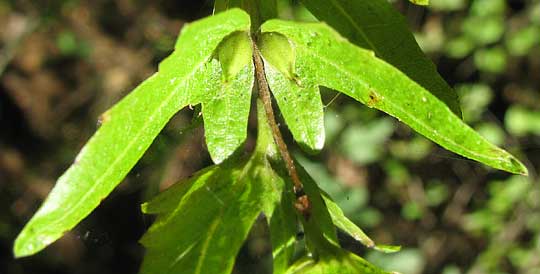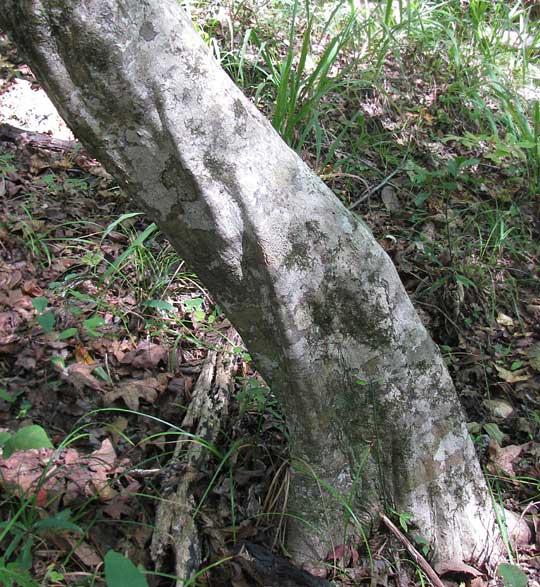Excerpts from Jim Conrad's
Naturalist Newsletter
from the October 25, 2009 Newsletter, from near Natchez, Mississippi
HORNBEAMS
In Kentucky I grew up calling them Blue Beeches but my first field guide said the better name was Ironwood, and nowadays field guides seem to have settled on the name Hornbeam. Whatever its common name, its technical name is CARPINUS CAROLINIANA. I was taught to place it in the Hazelnut Family, the Corylaceae, but nowadays most botanists regard it as a member of the Birch Family, the Betulaceae. You can see the tree's leaves bleached with sun-glare, and a fruiting head below:

That fruiting head is very curious, and distinctive. It consists of several three-lobed, down-slanted, modified leaves, or bracts, at the end of a branch. A close-up viewing two bracts from below is shown below:

There you can see that at the bracts' bases, where they attach to the stem, each bract bears a little oval thing, which is the tree's fruit, a nut. If you remember that birch fruit are tiny nuts attached to papery "wings" and clustered in dangling, spike-like heads, you'll recognize the relationship between Hornbeams and birches.
Hornbeams occur in the forest understory in moist, rich soil such as that at the bottoms of our bayous and are distributed nearly throughout North America's Eastern Forest biome.
The name "hornbeam" derives from the tree's hard wood, like hard cow-horn. The Old English term "beam" meant "tree," which is believable because it's a cognate with the German word for tree, "Baum." "Hard tree... "
The Hornbeam's trunk is distinctive, as seen below:

Note its smoothness, its slate-gray color, and its smooth ridges giving it a "muscular" look. Though Hornbeam wood is exceptionally hard, it's so difficult to work with because of that hardness and its twistiness that it isn't used that much. Traditionally one important use for it was as gear pegs in simple machines, especially windmills.